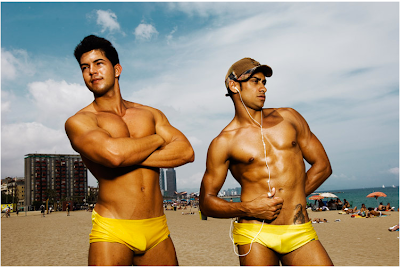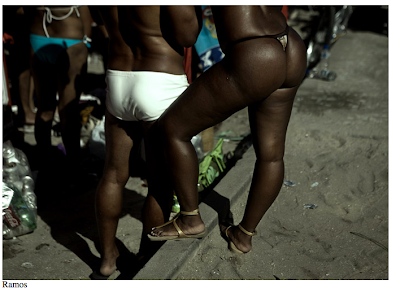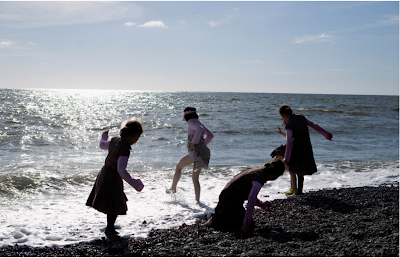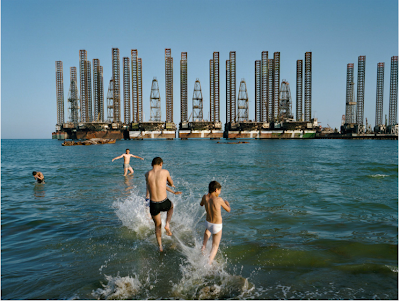Summer is already over in SF. The days are getting shorter, the rain has started, but the good thing about San Francisco is that it’s never winter either… Anyway, after viewing the beach from a distance, I wanted to get closer, to get to know the people, to put a face on those vacationers that we often to easily accuse of participating in mass tourism. Guess what? It’s everyone… You, me, us. Everyone, everywhere. Isn’t it the beauty of the beach? It’s open, it’s free, it’s there for us to enjoy. Have you noticed how the beach is probably the most multicultural place? How for once no matter your age, your nationality, your sex, your race, your political or religious views, you can all enjoy an activity together, or should I say next to each other?
Evzen Sobek
In Life in Blue, Evzen Sobek started to document the vacations of groups of people, who spend weeks and sometimes months on the banks of a reservoir in the southeastern tip of the Czech Republic. He tried to understand why they go there and regroup in a not particularly attractive environment. He is now taking a step further as he is pursuing his ongoing ethnographic project throughout Europe, ‘Europe in Blue’. With the same curiosity, he uses his Hasselbald to approach and make contact with people. Raw, with humor, sometimes with irony, his images depict the faces of Europeans enjoying time together and explore the reasons behind this local yet universal social phenomenon of beach vacations.
 |
Evzen Sobek, Life in Blue |
 |
Evzen Sobek, Life in Blue |
 |
Evzen Sobek, Europe in Blue |
 |
| Evzen Sobek, Europe in Blue |
 |
| Evzen Sobek, Europe in Blue |
Lluis Artus
The beach is part of culture in Barcelona, Spain. I guess you get the same phenomenon every time the beach is part of the city. The beach becomes a way of life and celebrates even more than anywhere else the diversity of a city. Lluis Artus gives his personal vision of this vibrant beach culture by (sometimes literally) exposing people. An explosion of colors through strong flashes in bright daylight, a demonstration of skins and bodies. Meet Barcelonans!
 |
Lluis Artus |
 |
Lluis Artus |
 |
Lluis Artus |
 |
Lluis Artus |
 |
Lluis Artus |
More about Lluis Artus: www.lluisartus.com
Julio
Bittencourt
When you think about beach culture, which city comes first to your mind?
Miami? LA? I guess if you’re American… But think again? Yes, Rio of course!
The Cariocas live on the beach. In the middle of the afternoon everyone puts on
their tiny swimsuit to meet, to see and be seen on the multiple beaches of the
city. Famous Copacabana, beautiful Ipanema, music, sports, capirinhas, bodies…
all are symbols of a beach culture envied everywhere. But that’s not exactly
the images Julio Bittencourt wanted to show. Wherever you come from, down from
the favelas or from the richer neighborhoods, you go to the beach but
unfortunately not at the same place. There are so many beaches in Rio that the
idea of beach diversity seems corrupted – depending who you are, you go to a
different area. A few miles from the icons, there is an artificial lake not far
from a polluted beach. Piscinão de Ramos, or “big pool of Ramos”, is where
thousands of people from the favelas go. But Julio Bittencourt’s unique and penetrating
images show us that as elsewhere the fun of the beach erases daily issues, the sun is shining, people
are laughing, cachaca flows.
 |
| Julio Bittencourt, Ramos |
 |
| Julio Bittencourt, Ramos |
 |
| Julio Bittencourt, Ramos |
 |
| Julio Bittencourt, Ramos |
 |
| Julio Bittencourt, Ramos |






























